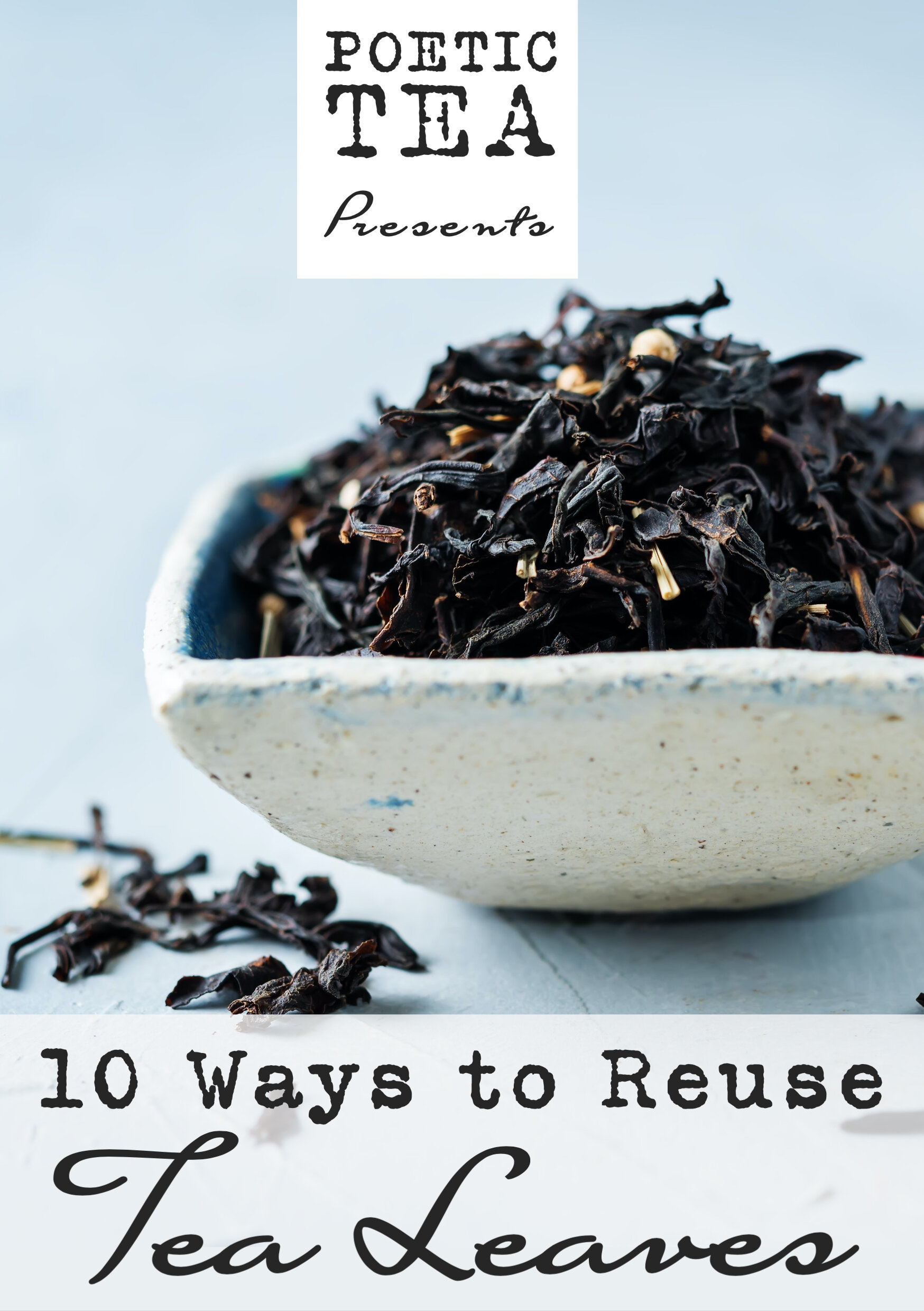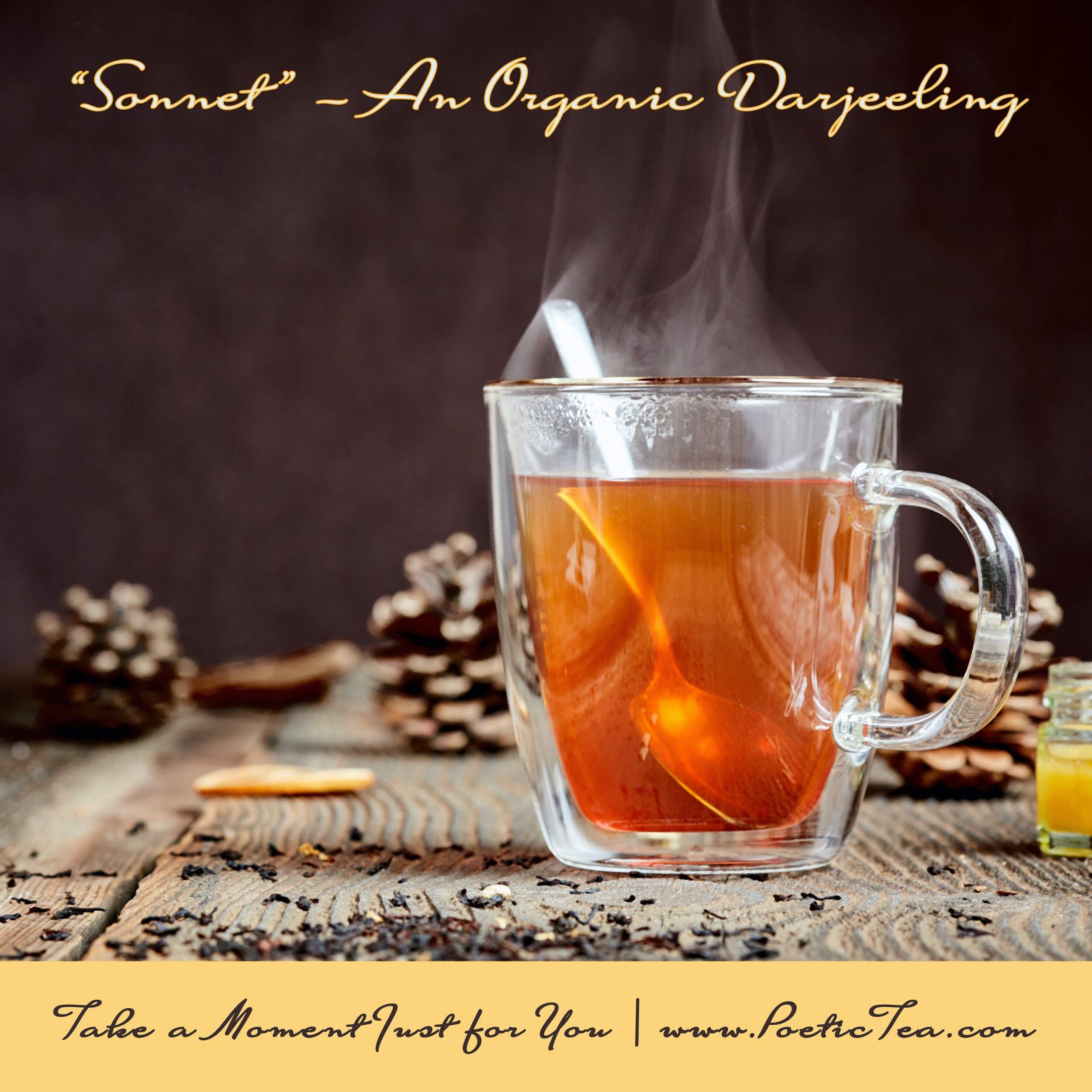Using Tea for Gardening
One way to give a second life to those old, brewed tea leaves is to let your garden and houseplants benefit from them. Composted tea is essentially a homemade fertilizer — tea can boost the overall health of many plants and help equip them to better resist disease and pests. Since tea leaves are natural, organic matter and contain tannic acid and loads of nutrients, they can help create a more fertile environment for plants as they decompose and release their magic into the soil. As the soil becomes more appealing for earthworms and microorganisms, oxygenation increases, and your plants benefit from a stronger root system, in turn, giving them more opportunities to become thriving and vibrant.
Make a botanical tea spray
Rebrew your tea leaves and cool to room temperature. If necessary, dilute with more water until you have a lightly-colored tea that would be a bit too weak to drink. Add to a spray bottle or garden sprayer and mist your plant leaves on a weekly or semi-monthly basis. Be sure to use fresh, re-brewed tea as it will contain the most nutrients. Also avoid using hot temperatures on plant leaves.
Compost old tea leaves.
Remove used tea leaves from the bag (unless they are compostable bags) and add your tea leaves to an to an airtight indoor food scrap collector or freeze in a reusable container to drop at a composting service at your convenience. You can toss the emptied tea bags into the drainage layer of potted plants if you don’t want to throw them away.
Opt to have your food scraps picked up by a composting service (if you have one in your area), or you can drop them at a community compost collection site. You can also create your own compost bin if you wish. Here’s a quick, easy, inexpensive way to make a compost bin:
Take an old rubbermaid-type container (at least 24'“tall) with a fitted lid and drill 8-10 small holes in the lid for aeration and in the bottom for drainage;
Fill the bottom of the container with newspaper and/or leaves until it’s about 1/4 full and add dirt on top until it’s about half full;
Add your non-animal food scraps (tea, coffee grounds, fruit peel, veggie scraps, bread crust, egg shells, last week’s flower bouquet) and stir;
Lightly dampen (don’t overwater) - it should have the moisture of a wrung out sponge; stir again;
Continue to add scraps weekly and top with a layer of things like leaves, bark, egg cartons, shredded paper, and grass clippings;
Stir weekly to integrate the organic matter and help keep the odor down.
In about 4-6 months, you should have a nice top layer of dark, crumply compost to add to your garden soil, flower beds or sprinkle on your lawn. Leave the decomposing layer at the bottom and continue to layer and stir weekly.
Considerations
Not all plants thrive in acidic soils. There is no need to invite plants that prefer alkaline soil to your tea party. Many plants however, such as rose bushes, marigolds, sweet potatoes, parsley, irises, peppers and blueberries (to name a few) would love an invite. Some of them would even be happy if you sprinkled a thin layer of dried, once-brewed tea around them like mulch.
Using Tea for House Cleaning
Before you toss those old tea leaves, consider putting them to service. Here are some ideas for reusing your tea leaves to help keep your home in tip top shape:
Use Tea as a Furniture Polish
Re-brew 2-3 servings of used black tea leaves in a 1 c. of boiling water and cool/chill. Strain and add to a sprayer or dip a rag in your tea and use as a wood furniture polish. The wood will like the tannins in the tea and you’ll be happy with the shine it gives back.
Use re-brewed black tea to make your mirrors, windows, and shower doors shine by wiping them down with tea and buffing dry.
Use Tea as a Deodorizer
Used, dried green tea leaves can be placed in an aerated container in the fridge, car (or teenage boy’s room) to absorb odors. Mix them with baking soda for maximum strength.
Dry (or damp) green tea leaves can be sprinkled on carpets to absorb odor. Let them sit for 30 minutes to an hour (or until they’re completely dry) before vacuuming them up. Avoid using damp leaves that produce a tea that is darker than your carpet to avoid staining.
Use Tea to Help Clean your Fireplace
When cleaning ashes out of your fireplace, sprinkle damp tea leaves around and they’ll attract the ashes as you’re sweeping them up to help keep them from blowing around.
Using Tea for Skin Care
Tea is loaded with antioxidants and also has antibacterial and anti-inflammatory properties. Both green and black teas are rich in polyphenols and catechins, two antioxidants that are known to help prevent cell damage, fight aging, and combat acne. Here are some ways you can reuse those old tea leaves to make your skin happier:
For the Face
Rest cool, moist tea bags on and around your eyes to reduce puffiness.
To help protect your skin from premature aging, re-brew your green tea leaves, mist or dab your face and neck with warm or room temperature tea and let it dry before rinsing. Green tea contains EGCG which helps rejuvenate dying skin cells and the B & E vitamins found in green tea are crucial for collagen production, cell rejuvenation, and hydration.
For Hands and Feet
Use damp tea leaves or brewed tea to scrub hands and remove cooking odors (like onion, garlic, and fish).
Used re-brewed tea in a foot bath to help keep feet free from odors and nourish skin.
For Healing Skin
Treat sunburns and insect bites by setting cool, damp tea bags on the infected area for ten or fifteen minutes.
Treat acne with re-brewed green tea by misting face or dabbing on and letting it dry before rinsing. The ECGC in green tea has been found to fight inflammation and reduce sebum production (which can lead to acne when overproduced).
For the Scalp
Massage re-brewed green tea into scalp. The tea will help stimulate cells in the hair follicles to slow hair loss, and it protects scalp from dandruff, bacteria, fungus, and sun damage.
For the Whole Body
What goes in the body will reflect in your skin. All forms of tea come from one plant, the Camellia Sinensis, so it doesn’t matter if you’re drinking green, black or white tea, they’ll all give you varying levels of health benefits depending on where they were grown and how they’re processed. To get maximum benefit from this spectacular plant, be sure to not only drink tea, but re-brew leaves to “re-drink” tea. One way to do this is to brew and strain your leaves for a fresh cup and then put the once-brewed leaves in a heat-safe jar or infuser bottle with more hot water (you may need to double up on the tea to water ratio depending on how long and how much was steeped during the first round. Feel free to add honey, orange peel, fresh mint, or anything that sounds good and refrigerate overnight. You’ll have a tasty grab-n-strain refreshment the next time it sounds good and you’re not only squeezing as much from your leaves as possible, you’re giving your body a blast of wellness with every sip.
Cheers to you and your tea journey! If you have any more ideas/recipes about how to reuse tea leaves, I would love to read them in the comments below.


























